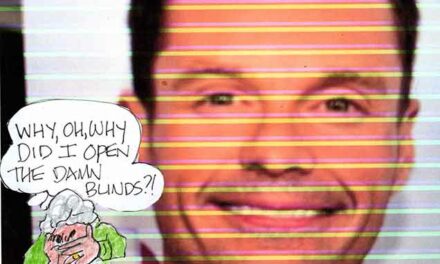“Hula” Celebrates a Dance, a Culture and a Novelist’s Dazzling Debut
Jasmin Iolani Hakes’s book combines history, character, and outrage
By Ed Goldman
Hula,” the dazzling debut novel of Hawaii native and onetime Sacramentan Jasmin Iolani Hakes, is an eye-opener for anyone whose sensibilities about the 50th state were shaped by an Elvis movie (“Blue Hawaii”), TV series (“Hawaiian Eye“ and either version of “Magnum P.I.” and “Hawaii Five-O”). Or even Don Ho (“Tiny Bubbles”).
In a saga that begins with narration by the spirit of the island’s people, Hakes offers readers a sociopolitical history lesson, a coming-of-age story and a trenchant character study. Her command of the material—its pace, language, scope and occasional quicksilver flashes of humor—seems more the work of a seasoned novelist than someone making her literary bow.
Jasmin Iolani Hakes. Courtesy of the author.
Yet for those of us who’ve known the author and her struggling persistence to tell this story for well over a decade, Hakes’s artistic confidence is neither surprising nor remotely ingenuous. From its opening pages, readers will feel assured they’re in capable storytelling hands (which are mandatory for hula performers, of course).
The novel time-travels, to and fro, just as real life does if we’re paying attention. It follows the odyssey of a young girl, then woman, Hi’i, whose fair skin, pastel eyes and reddish hair make her native-Hawaiian heritage suspect among other natives as well as members of her own family, and her efforts to find her place in the magnificent Polynesian sun.
At the same time, Hakes probes the political disruption and corruption of developers and colonialists (ah, but I repeat myself) wishing to lay claim to an entire people—and offers commentary on the wealthy “haoles” (whites) who see the sacred tradition of the hula and the soul of Keaukaha, the island itself, as nothing more than exotic entertainment in a tropical setting. (By the way, Keaukaha is part of Hilo: its name means “passing current.”)
Here’s an excerpt from one of the many sequences I found moving in “Hula.” It occurs when the grown-up Hi’i steps on to a cafeteria floor for the first time in years to perform the hula:
“The worn glaze of the cafeteria floor tickled under her bare feet, giving her the feeling she’d slipped into an old favorite pair of shoes she’d forgotten she had. Currents of energy ran up her legs. She tried to remember the last time she’d walked around barefoot. What came was the vibration of the Merrie Monarch stage, the varnished smoothness of the halau floor, the thick black sands at Richardson’s Beach Park—her feet carried their own memories of Hilo. It made her feel like the girl she’d been, the one she’d forgotten about. She felt so young that she experienced an odd sensation of the past and the present sandwiching itself, her young and older selves meeting for the first time.”
I first met Hakes when I was a board member and she was the development director, of the Sacramento Philharmonic, in the days just before it merged with the then-mordant/now-thriving Sacramento Opera. She had already begun writing a version of “Hula” under the title “The Cosmopolitan”—which she was tagged as a child, as a semi-derogatory nickname for a person of no particular culture (an autobiographical tidbit of her novel).
During the next few years, as she raised her two talented daughters pretty much singlehandedly, she continued to work on what became her introductory opus, fearlessly slicing and dicing it into various storylines as she subsequently worked as a political and fundraising consultant both in Sacramento and Los Angeles (where she now lives).
Along the way, she wrote op-eds for the Los Angeles Times and other publications, managing to rack up a series of writing awards—including a Best Fiction prize from the Southern California Writers Conference, a Squaw Valley LoJo Foundation Scholarship, and a Hedgebrook residency. (The latter is the prestigious 35-year-old retreat for women writers to work on their projects; it’s located on Washington’s rural Whidbey Island in Puget Sound.)
“Hula” is being published by Harper Via, an imprint of HarperCollins Publishers. It’s available in book stores and on Amazon.
If your sense of Hawaiian history and its people was delivered by James Michener and the aforementioned films, TV shows and lounge singer, “Hula” will surprise, delight and at times outrage you. Everything an extraordinary novel should do. Hauʻoli heluhelu (Happy reading)!
Ed Goldman's column appears almost every Monday, Wednesday and Friday. A former daily columnist for the Sacramento Business Journal, as well as monthly columnist for Sacramento Magazine and Comstock’s Business Magazine, he’s the author of five books, two plays and one musical (so far).













